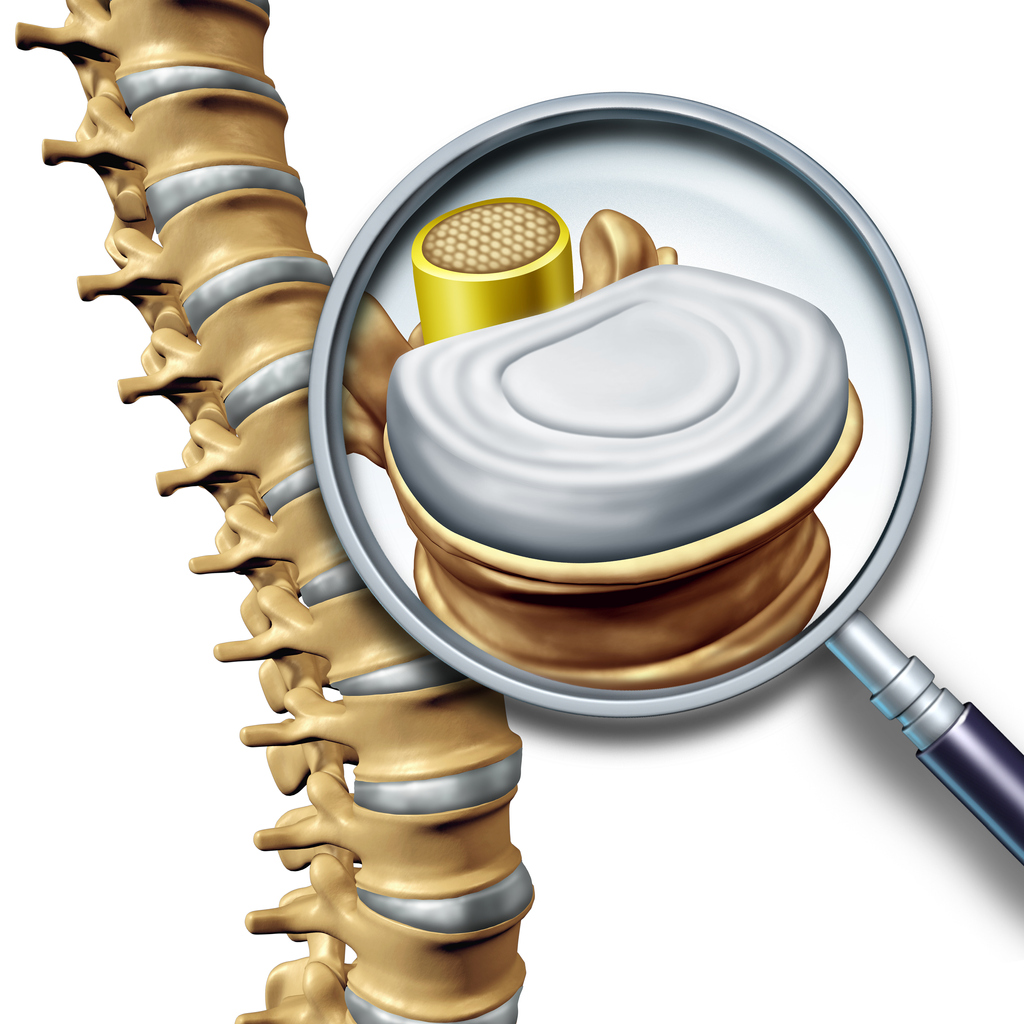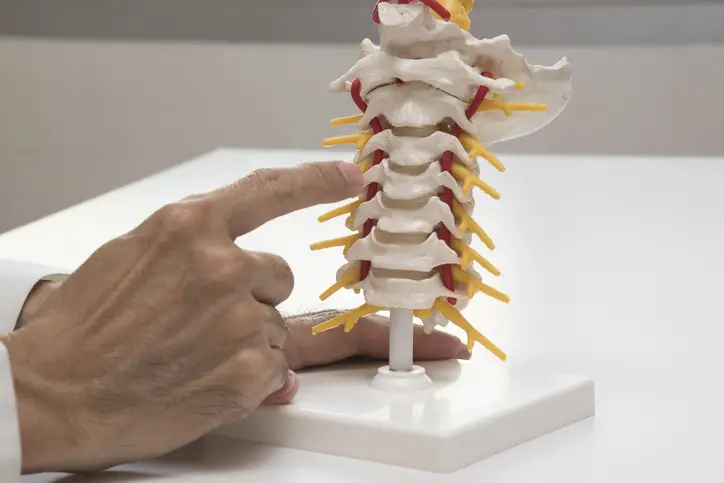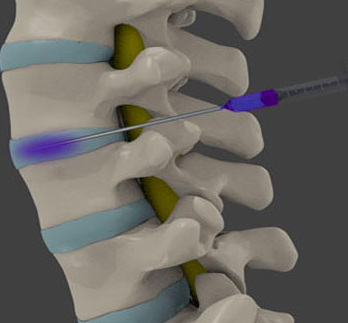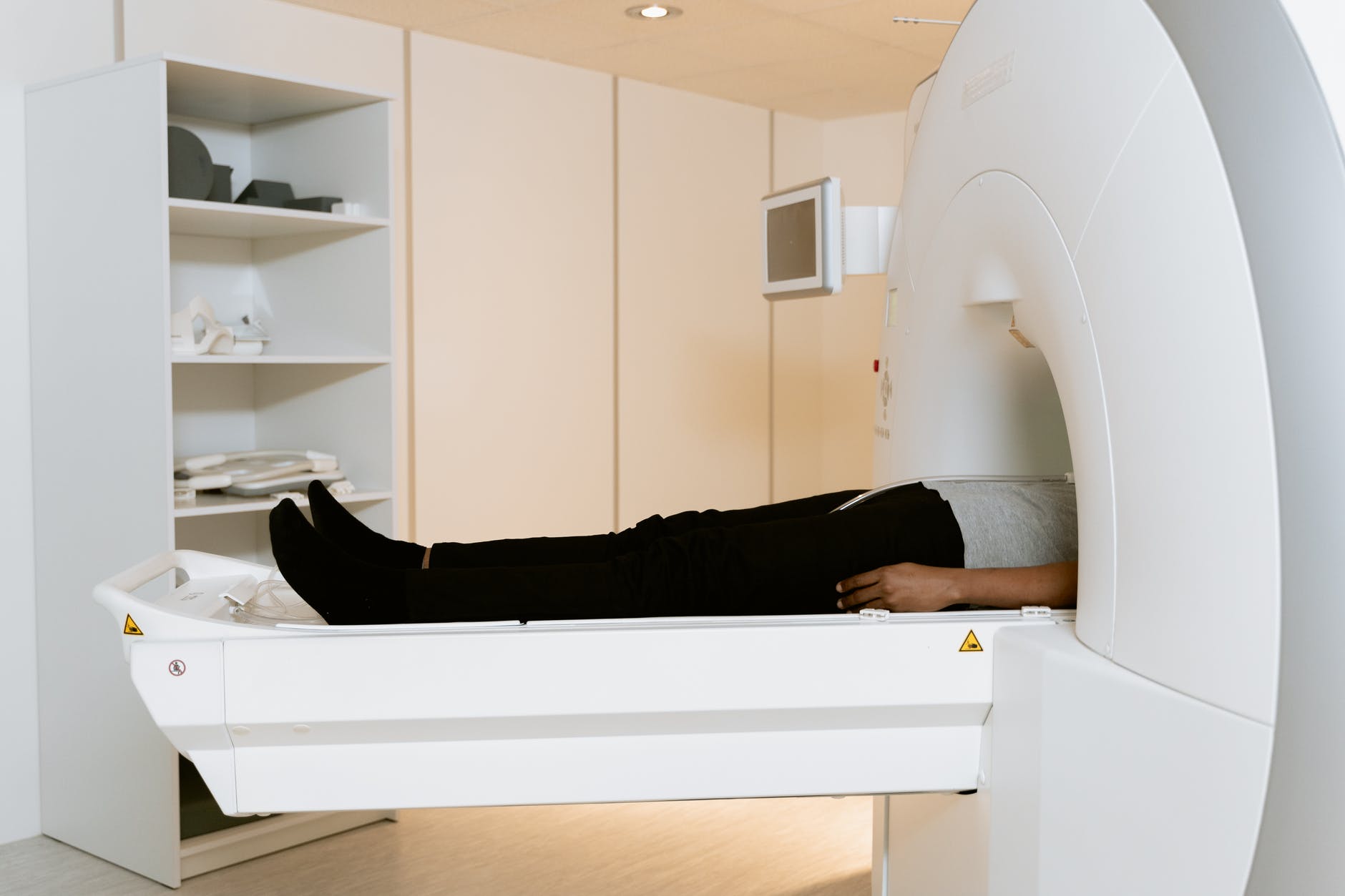Le facet block lumbar is used to relieve lower back pain. It is used when conventional treatments (such as medication or physiotherapy) have not brought significant relief.
In which situations is it preferable to do a lumbar facet block? Is it risky? What are the alternatives if we prefer to avoid infiltration? We talk about it in this article.
Lumbar Spine Anatomy
Le Lumbar spine part of the spine. Located between the dorsal spine and the sacrum, it is made up of 5 bones, or vertebrae, numbered from L1 to L5. THE vertebrae are separated from each other by intervertebral discs. These discs help absorb shocks and also facilitate movement of the back.
A vertebrate is composed of a vertebral body in front, and a bony arch behind. The space between the body and the posterior arch forms a channel that runs the length of the back. It is called Spinal canal (or spinal canal).
It is in this space that the spinal cord, although it ends at the L2 level and gives way to the ponytail.
The facet joints also called posterior interapophyseal joints (“facet joints” in English), are the joints that connect the vertebral arches. Together they form intervertebral foramina (also called foramina) which allow spinal nerves to pass on either side of the spine.
These nerves which originate from the lumbar region (more precisely from the spinal cord) will travel to the lower limbs to provide sensation and movement.
Indications
As soon as the facet joints are irritated and symptomatic, one can consider a facet block type infiltration at this level. Some of the most common conditions requiring this kind of intervention include:
- Facet arthritis lumbar
- Zygapophyseal osteoarthritis lumbar
- Spondylolisthesis lumbar
- Spondylolysis
- Ankylosing spondylitis
- Narrow lumbar canal
- spinal stenosis
- Herniated disc
In general, the doctor will consider this intervention after noting a lack of progression despite well-conducted conservative treatments. This includes taking medication, therapeutic exercises guided by a physiotherapist (physiotherapist), or even manual treatments (such as massages, manipulations or osteopathy).
Essentially, the objective of the infiltration will be to:
- reduce pain and inflammation
- allow rehabilitation to continue without being constantly limited by disabling symptoms
In addition to the therapeutic aspect, it is possible to use a facet block to clarify the diagnosis and determine the cause of the pain. Indeed, a positive response to the infiltration would mean that the facet joint was indeed the source of the symptoms. Conversely, a lack of results would indicate that the pain appears to be coming from another structure (such as the nerve roots that emerge from the spine).
Prep time
Before the operation, the doctor will make sure that you are a good candidate for infiltration. To do this, he will ask you questions about your medical history, allergies, etc. Depending on your medication (for example aspirin or anti-inflammatories), you may be asked to temporarily stop consumption for a specific period before the procedure.
Depending on the injection site, you may be asked to leave certain metal objects at home. Indeed, objects such as jewelry, glasses, earrings, dentures or hairpins can affect the images produced by themedical imaging.
Also, it will be recommended not to eat or drink anything for a few hours before the examination, especially if a contrast product will be used during the procedure.
Procedure
Most often, the lumbar facet block will be performed by a radiologist. In all, the intervention is done within 30 minutes.
The patient will lie face down on the examination table. Sometimes monitors will be used to monitor heart rate and blood pressure during the procedure. Also, sometimes sedative drugs are used to facilitate the procedure in some people. If necessary, an intravenous line will be placed in a vein in the hand.
The vertebral area where the needle is to be inserted will be sterilized and then covered with a surgical drape. She will then be anesthetized with a local anesthetic at the lumbar level to minimize pain during the infiltration.
Guided by real-time radiological images, the doctor will then insert the needle through the skin, at the level of the lumbar facet joint potentially responsible for the symptoms. If needed, a small amount of contrast material will be injected to confirm the exact location of the needle. It should be noted that one or more lumbar facet joints can be infiltrated during the same session, if it is estimated that the pain would come from more than one site.
As soon as the doctor is sure of the correct positioning of the needle, he will inject the drugs aimed at calming the inflammation and relieving the pain. It can be an anesthetic like lidocaine, an anti-inflammatory (like cortisone), or a mixture.
After the lumbar facet block is performed, the doctor will remove the needle and apply pressure to prevent any bleeding. The patient is then usually kept in an observation room for a while to monitor their condition and avoid any complications.
Risks and side effects
The risks associated with lumbar facet block are generally minimal. The pain felt during the procedure is generally limited to the injection of local anesthetic at the beginning of the procedure, or even to the use of the intravenous line.
You may feel pain where the needle was inserted for a few days. You can apply ice or a cold pack to the injection site in the lower back, and the doctor may prescribe pain medication if the discomfort becomes bothersome.
In rare cases, you may experience side effects from the anti-inflammatory medication, including:
- Feeling hot for several days
- Water retention, weight gain, or increased appetite
- Increase in blood pressure
- Mood swings, irritability, anxiety, insomnia.
Moreover, any infiltration comes with its share of risks. Although rare, the following are possible complications after a facet block:
- Infection due to infiltration
- Allergic reaction to contrast agent (if used), medications, or local anesthetic
- Bleeding (especially in patients with bleeding disorders or taking blood thinners)
- Nerve damage from the needle
- Risk to the fetus if the woman is pregnant
Results and effectiveness
In general, one can feel a quick relief considering the use of local anesthetics. On the other hand, it happens that the therapeutic effect is noted in the days following the lumbar facet block. This is also the reason why the patient is recommended to avoid strenuous activities and prolonged postures (such as driving) for about 24 hours.
Results vary from patient to patient, but effective treatment provides pain relief for several months. If the lumbar facet block is effective in relieving your pain, the procedure can be repeated up to three times a year. However, if the first infiltration is inconclusive, the facet block should not be repeated.
In the week following the facet block, the doctor will ask you to resume your activities gradually. Physiotherapy sessions may also be prescribed to maximize gains, and promote a safe return to your leisure activities.








